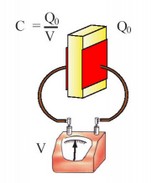Volume resistivity
Laboratory > Electricals
| What is Volume Resistivity ASTM D257, IEC 60093 | |
The volume resistivity represents the resistance of an insulating material to the leakage of current through your body. Calculate the ratio of the potential gradient to the current in a material with the same density. A DC resistance between opposing faces of a one meter cube of the material is numerically equalized to the volume resistivity in SI (Ohm-m). In other words, volume resistivity is an inherent quality that measures the intensity with which a given substance contradicts the direction of electric currents. The low level resistivity suggests that the substance will easily allow the flow of an electrical charge. The unit of resistance is known as ohm, which is symbolized by the letter "R". If a current of one ampere passes through a part where the voltage could be at least one different volt, the resistivity of that part is one ohm. The lengths in the resistivity of the surface and the cancellation of the ratio are usually measured in ohms because the four ends of the electrodes form a square. However, some test results use ohms per square due to their more descriptive nature. | |
| Test procedure | |
A sample of standard size is placed between two electrodes. For sixty seconds, a voltage is applied and the resistance is measured. The resistivity of the surface or the volume is calculated and an apparent value is provided (electrification time of 60 seconds). Sample size A 4-inch disc is preferable, or a 4-inch square. The minimum size is a 3.5-inch disk. |  |
Note | |
If a given application of voltage is maintained at a constant level, the electric circuit in a direct current will generally be in inverse proportion to the resistance. However, in a case of double resistivity, the current will only be half. On the other hand, if there is only half the resistivity, there will be twice the current. This applies to the vast majority of AC systems that run at low frequencies, such as circuits found in homes. In contrast, high frequency AC circuits often include parts that are capable of maintaining, emitting and converting energy. |  |
